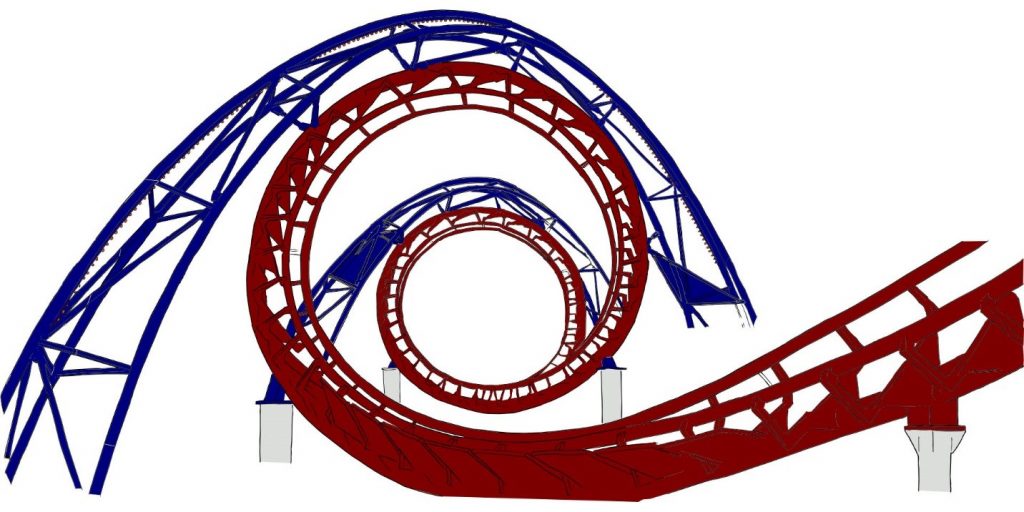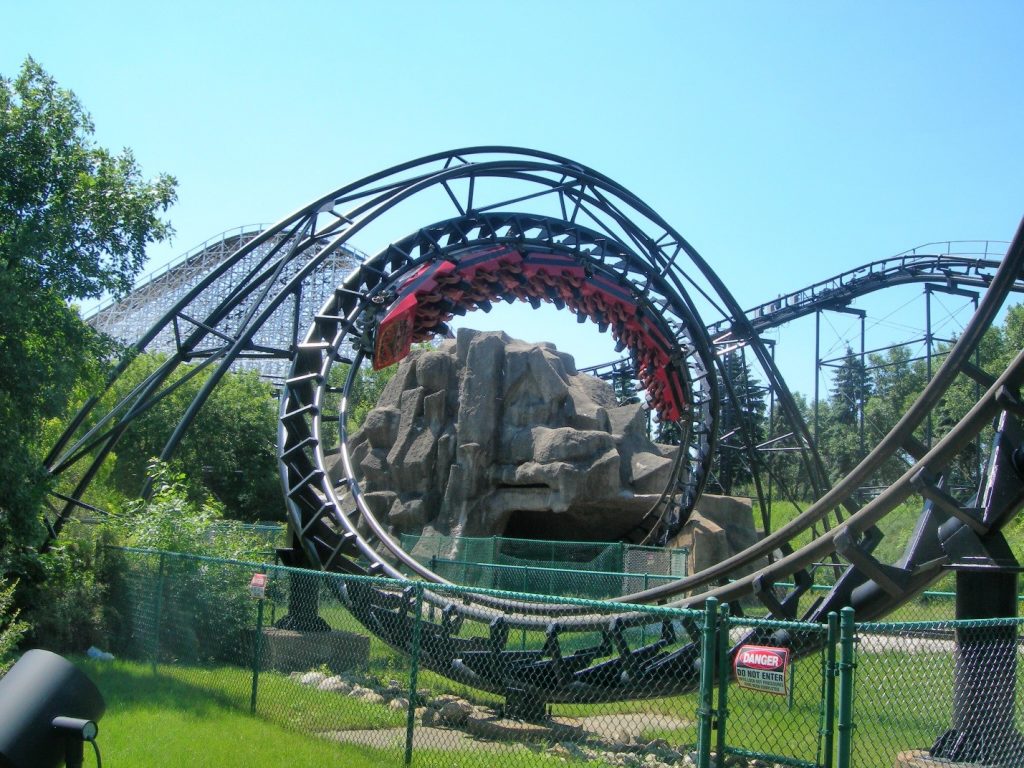InTrans / Sep 22, 2016
STEM on: Roller coaster engineer
Go! Magazine
 posted on September 22, 2016
posted on September 22, 2016
When it comes to defining “engineer,” or looking at jobs in the science, technology, engineering, or math (STEM) field, it’s important to keep an open mind.
We often have an image in our head of what we expect something to be like, and the purpose of this article series is to get you thinking about what else is possible when considering careers in STEM.
Engineering can lead you down many different career paths—it can be as different and exciting as you make it! For example, have you ever wondered about the people directly involved in the development of roller coasters? Some of the ultimate thrill rides? I’ll give you a hint: they’re engineers!
The basics
So, do you think you have what it takes? What does it take?
Roller coaster engineering falls under the domain of the mechanical engineer. Mechanical engineers apply the principles of engineering, physics, and material science for the design, analysis, manufacturing, and maintenance of mechanical systems. But remember, the possibilities are endless! Maybe one day, roller coasters will be designed as an alternative to urban public transit. Then, instead of a mechanical engineer, transportation engineers will be strapped into the driver’s seat. Will you be the first?
However, to be a typical roller coaster engineer, you’d first need a bachelor’s degree in mechanical engineering. No specific major exists for roller coaster engineering, but students interested in designing roller coasters are encouraged to consider additional physics, mathematics, and drafting courses in their curricula.

Mechanical engineering programs include courses in math, life sciences, physical sciences, engineering, and design. Some important qualities that an aspiring mechanical engineer should have are creativity and listening, math, mechanical, and problem-solving skills.
As a mechanical engineer today, you’d earn an average salary of over $80,000 annually. The median annual wage for mechanical engineers was $83,590 in May 2015, ranging from $53,000 on the lower end and $128,000 on the higher end.
Employment of mechanical engineers is projected to grow by 5 percent between 2014 and 2024. Employability amongst roller coaster engineers will depend on additional factors like the amount of new or renovated roller coasters at amusement parks and the financial success of amusement parks in general.
The job
So, what would the job be like? Would you be stuck in an office for eight hours per day, or is being a roller coaster engineer more of a thrill ride?
If you’re hoping for the best of both worlds—look no further—roller coaster engineering is for you. Mechanical engineers who design roller coasters mix it up a little, splitting their time between the office, lab, and on the actual job site.
The main things you’d be responsible for as a roller coaster engineer include deciding where to place the tracks, picking the right roller coaster for the environment, and ensuring the safety of each roller coaster before it opens for public use.

As an engineer, you’d work with a design team, which is typically comprised of engineering and drafting professionals. The team is responsible for all the elements of the development process, which includes the structure, electronics, and layout of the ride. As a design team, safety is the main concern. You would work to ensure that the ride meets the right speeds, weights, and forces.
Last, but certainly not least, as a roller coaster engineer you’d be responsible for making the ride a “thrill.” Engineers can include loops in the track, steep drops, twists, turns, embankments, and make use of natural scenery to enhance the rider’s experience.
The future?
Is working with roller coasters the right job for you?
If so, let’s take a look at a few things you’ll need to keep on your radar.
First, it’s important to note that securing a job on a roller coaster design team is highly competitive. For this reason, earning a graduate degree is encouraged in order to give applicants a leg up against other applicants.
Some colleges and universities offer five-year engineering programs where students can earn both their bachelor’s and master’s degree. Master’s degree programs offer students advanced studies relevant to the profession such as heat transfer, system dynamics, and fluid mechanics.
Then, aspiring engineers often need a license, though requirements vary by state. Although each roller coaster design team only needs one fully licensed engineer to supervise the others, obtaining full licensure might help your chances of scoring your dream job. For more information on licensing and how it works, check out “How to get licensed” from the National Society of Professional Engineers.
Are you thinking that roller coaster engineering—or mechanical engineering in general—could be the right fit for you? Then take the next step! Ask questions! Do your research! And above all, don’t limit yourself to a “traditional” job in science, technology, engineering or math. Remember, the possibilities are endless!
Related links
How to get licensed: https://www.nspe.org/resources/licensure/how-get-licensed
Success story: https://www.rose-hulman.edu/news/2015/persistence-faculty-support-help-student-secure-dream-job-designing-roller-coasters.html
The best and worst of being a roller coaster engineer: http://www.scholastic.com/browse/article.jsp?id=3747044
Japan’s “roller coaster” train: https://www.newscientist.com/article/mg21628945-600-commute-to-work-on-the-roller-coaster-train/
References
https://en.wikipedia.org/wiki/Mechanical_engineering
http://www.bls.gov/ooh/architecture-and-engineering/mechanical-engineers.htm#tab-4
http://study.com/articles/Roller_Coaster_Engineer_Job_Description_and_Education_Requirements.html
http://www.bls.gov/ooh/architecture-and-engineering/mechanical-engineers.htm#tab-6
By Hannah Postlethwait, Go! Staff Writer